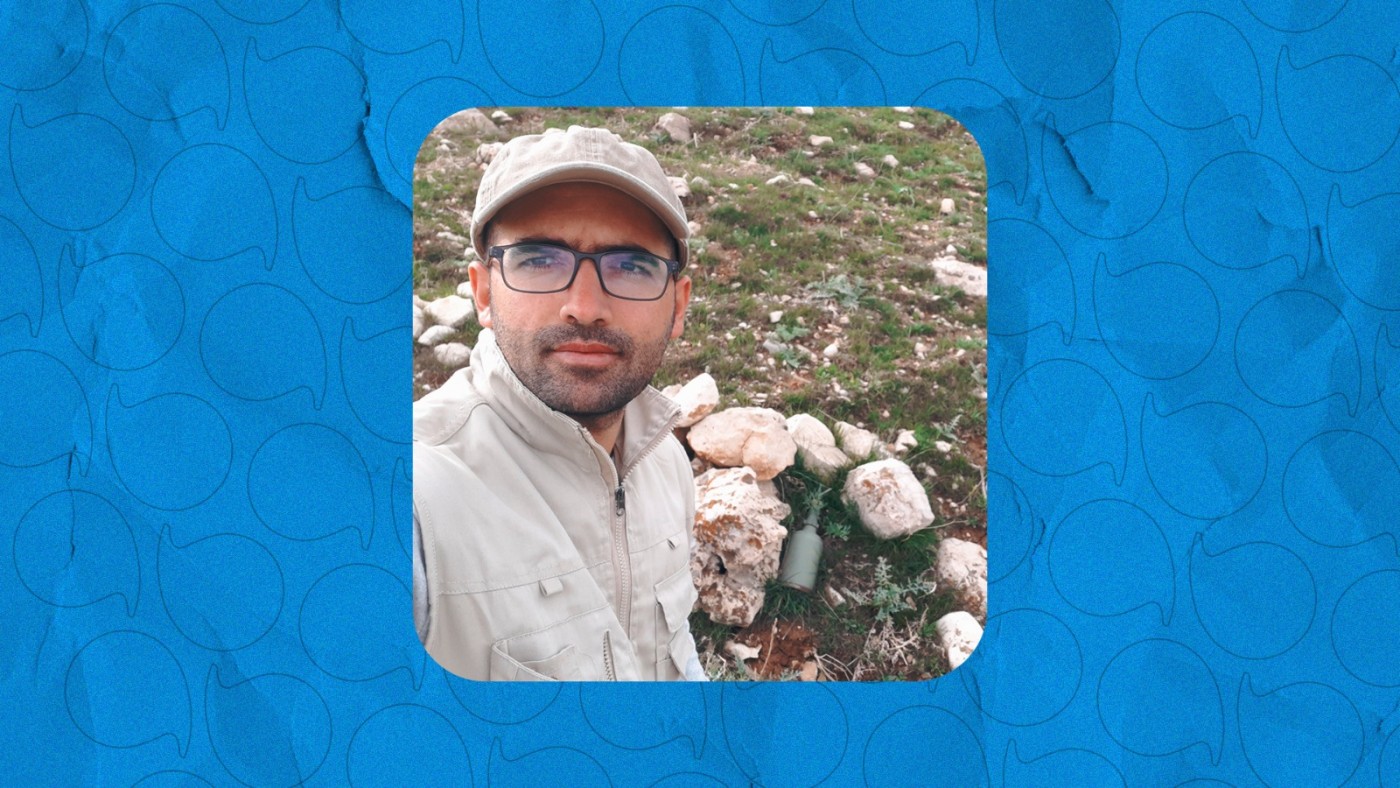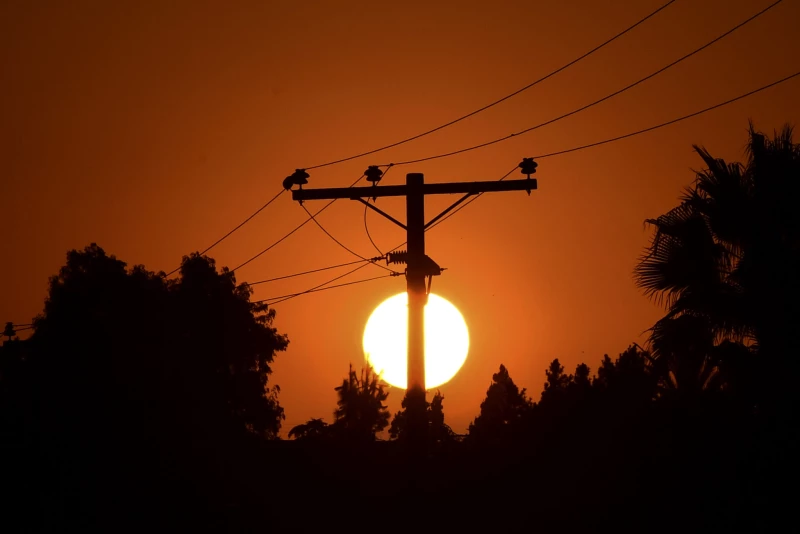ERBIL, Kurdistan Region of Iraq - Biologist Soran Ahmed, 32, is one of few experts in the Kurdistan Region researching wildlife and advocating for their protection through the creation of protected areas, training of new experts, and tougher legislation.
Ahmed’s family hails from the Bamo mountain range near Darbandikhan where he spends many days and nights monitoring and documenting rare and endangered species of leopards, wild goats, badgers, hyenas, lizards, and snakes, and has published a couple dozen papers on them in international scientific journals.
Ahmed believes that each animal plays an instrumental role in nature and that biodiversity and wildlife are as important to human wellbeing as they are to a healthy ecosystem.
I have been reading and following his work from a distance for the last seven years he has been working in this field and I only met him in person at an event in Erbil last week. I asked him some questions about the state of our wildlife and biodiversity and here are his answers.
The New Region: Which wild animals in the Kurdistan Region are most threatened?
Ahmed: Some species here are on the world list of endangered animals, for instance the Zagros (Persian) leopard and the gazelles of Garmiyan. At the Kurdistan level most of them are threatened, particularly those that need bigger habitats for survival such as leopards and brown bears. The carnivores as well face the same threat due to a decline in their prey population. Some have even remained only in specific and limited areas such as mountain sheep that can only be found in the Halabja area and Garmiyan. Some face the threat of extinction due to hunting and those are the gazelles of Garmiyan, mountain goats, caucasian badger, brown hare, porcupines, and striped hyena.
There are also some reptiles that are unique to the Kurdistan Region but globally counted as threatened, for example the desert monitor lizard (snake eater in Kurdish) that often get killed, as well as the Kurdistan newt that live in mountain fresh waters. The destruction of their habitat and water pollution is a serious threat to them. Some animals that once roamed here have gone completely extinct among them badgers and fallow deer.
What are some of the main threats to wildlife here?
The threat differs from one area to another, but generally it is the lack of protected areas, hunting and trafficking, lack of data and expertise, climate change, habitat fragmentation, forest destruction, fires, decline in water resources and overgrazing.
How important is wildlife for a healthy ecosystem and us as humans?
Wild animals, plants, and insects complete the ecosystem and make it habitable for humans in terms of food and medicine. Even if all of humanity comes together, they would not be able to produce a bite of food without the help of animals and plants. In an ecosystem each animal plays its own unique role, and the destruction of that ecosystem threatens human life too.
Do hunters hunt as a hobby or for food?
Hunting is one of the oldest human practices and it has been the case in Kurdistan too, for example partridge hunting. Hunting needs regulations so that their numbers and kind survive, and this should be done by the government. Hunting in Kurdistan is mostly a hobby, but in certain areas and for economic reasons, some people, especially the young, do trade in wild animals, particularly wild goats, porcupines, Garmiyan gazelles, hare, some birds, and hyenas.
Villagers and mountain communities live closer to wildlife habitats. Do they have a better understanding of it or are they, too, a threat?
Generally, they have a better understanding and, in most cases, protect them. But in each community, there are hunters, though a few, who have a terrible effect on wildlife as they know the terrain and its animals very well and can easily hunt them. Sometimes they even know more about them, their habitat, and behavior, than wildlife experts.
You have done a great deal of research on the snakes of Kurdistan. How many species are there, how many are venomous and how many are harmless?
Around 32 species of snakes have been recorded in the Kurdistan Region so far and we believe there might be another 10 species that could be discovered in the future. For example, with local, Iraqi, and international experts we have since 2021 recorded three new species which we had long expected to exist.
Among those recorded only three species are venomous and five others are semi-venomous that pose no threat to humans whatsoever. The rest are completely nonvenomous.
Is there an existential threat to these snakes?
Yes, certainly. Unfortunately, as most people think that all snakes are venomous they kill them without any considerations. People should know that not all snakes are dangerous. In addition, there is the threat of habitat loss, wildfires, climate change, decline in their prey, and excessive use of pesticides.
Snakes play a crucial role in the ecosystem and they keep insects, mice, rats, birds, and even other snakes in check, and they themselves are food for birds and carnivores. For example, if snakes disappear from a farm, mice, rats, and insects will increase that will do their damage and spread disease.
There is the unique Zagrosian whip snake that has been recorded in southern and central Iran as well as in the Qaradagh area of the Kurdistan Region. There is also a type that has been registered as a Kurdistani snake and that is the Kurdistan viper.
How much does the outside world know about wildlife in Kurdistan?
They are, to a great degree, familiar, especially their researchers, who know that little research has been done on this region that has a rich biodiversity and great opportunities for new discoveries. Scientific sources have for long referred to the Zagros region as a biodiversity hotspot and the birthplace of new species.
How often do you go out on research trips?
Weekly. For the mammals I do not have to stay overnight as trap cameras do the job, which is great help, but sometimes I stay overnight particularly when I have to monitor snakes, insects, and smaller mammals that are nocturnal by nature.
How about landmines and other explosives? What threat do they pose to wildlife?
Even though landmines have in some areas created a safe haven for wild animals away from the reach of hunters, they still pose a serious risk to wildlife. In 2008, for example, a leopard was killed by a landmine in Murtka village near Darbandikhan, and landmine explosions in the summertime cause fires that cannot be controlled and as a result destroy forests and their habitat. Landmines also make research work challenging and more difficult in those areas.
Are there enough wildlife researchers in the Kurdistan Region?
Not at all. They could be counted on the fingers of one hand. There must be more focus on that area and those working in this field should be supported more, especially the youth. It should become their profession and source of livelihood. There are people who want to work in this field, but because they have to rely on their own finances they are discouraged and cannot continue. Protected areas can be created where young people, experts, and researchers could be trained and employed to work and manage the place. They can conduct research, collect data, and help the government to access international funds.
Do we need better and stronger regulations for the protection of wildlife, or do we have it, but not enforced?
The laws need continuous review and amendments. We have good animal protection laws that are not enforced. For instance, the penalty for killing snakes or lizards is 100,000 dinars, and yet not a single person has ever been punished for killing a snake or a lizard when social media is in fact full of such images.
Can two countries cooperate on protecting wildlife on two sides of a border?
Yes. It has been successfully done in many places. In our research we mention that protected areas could be created between Iraq and Iran that would be great for the protection of leopards. Iranian researchers have made the same recommendation for the protection of leopards and bears.
Do people in the villages or rural areas contact you and other researchers when they come across a new animal or when a wild animal is killed?
Yes, they do, especially when they spot an unfamiliar animal, and ask me about its identity, among them leopards and snakes. Often, they send me pictures of snakes and ask whether or not they are venomous. They also contact us when an animal is killed like the leopard in Piramagroon (2020) or the bear in Balakayati (2024).
Can some animals that have disappeared from Kurdistan be brought back?
Yes. First, we have to protect those that are endangered and some that have gone from Kurdistan but still exist in neighboring countries, could be brought back.
Where does the government stand on the issue of wildlife?
Compared to when I first started it is much better now. We have had many joint efforts on wildlife and forest protection. I see that the government and authorities are taking this subject seriously nowadays, but the issue is lack of sufficient data and expertise both in the government and non-governmental organizations. Serious steps should be taken to strengthen human capacity and increase expertise.

Biologist Soran Ahmed. Photo: Submitted



 Facebook
Facebook
 LinkedIn
LinkedIn
 Telegram
Telegram
 X
X


